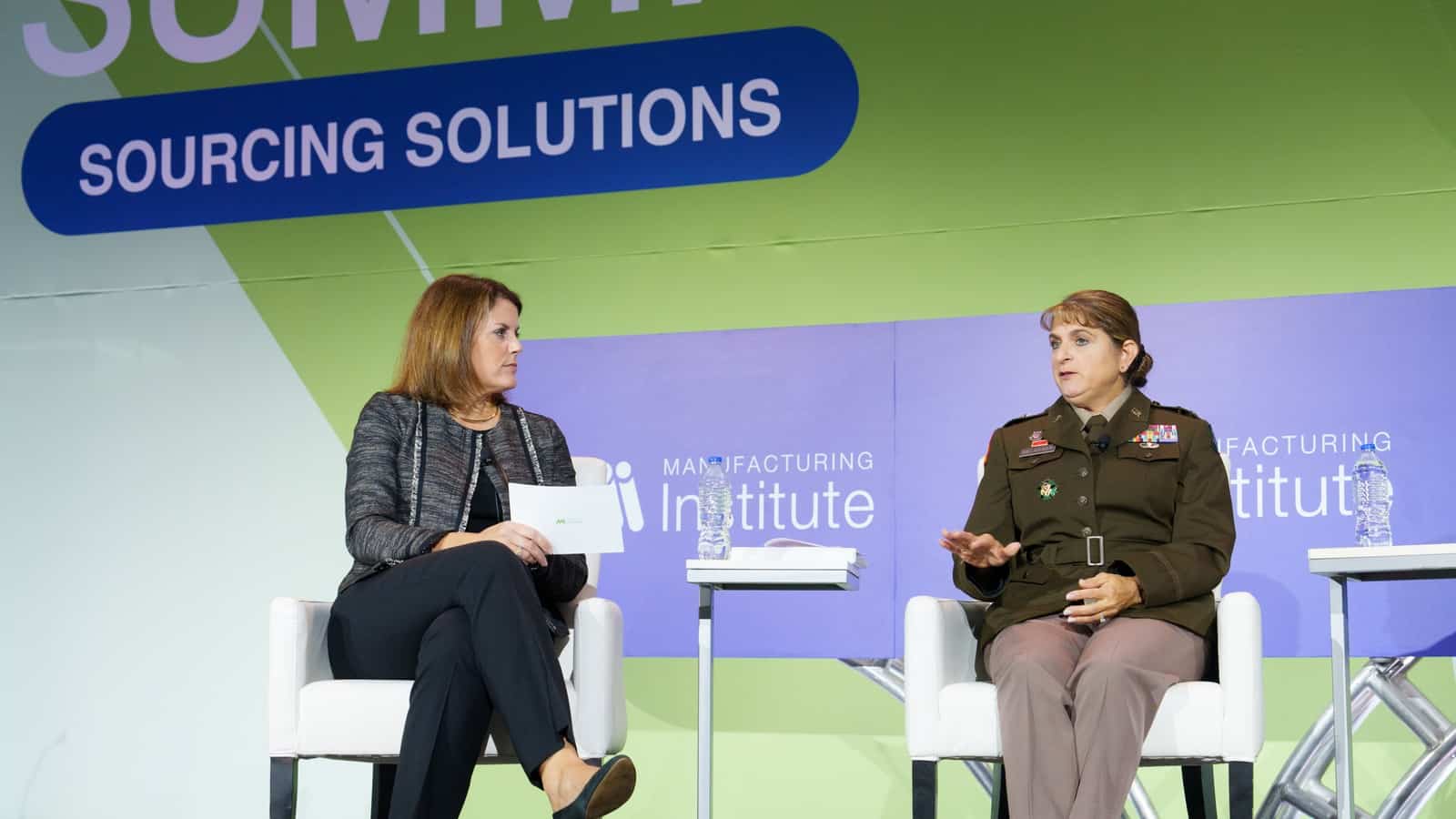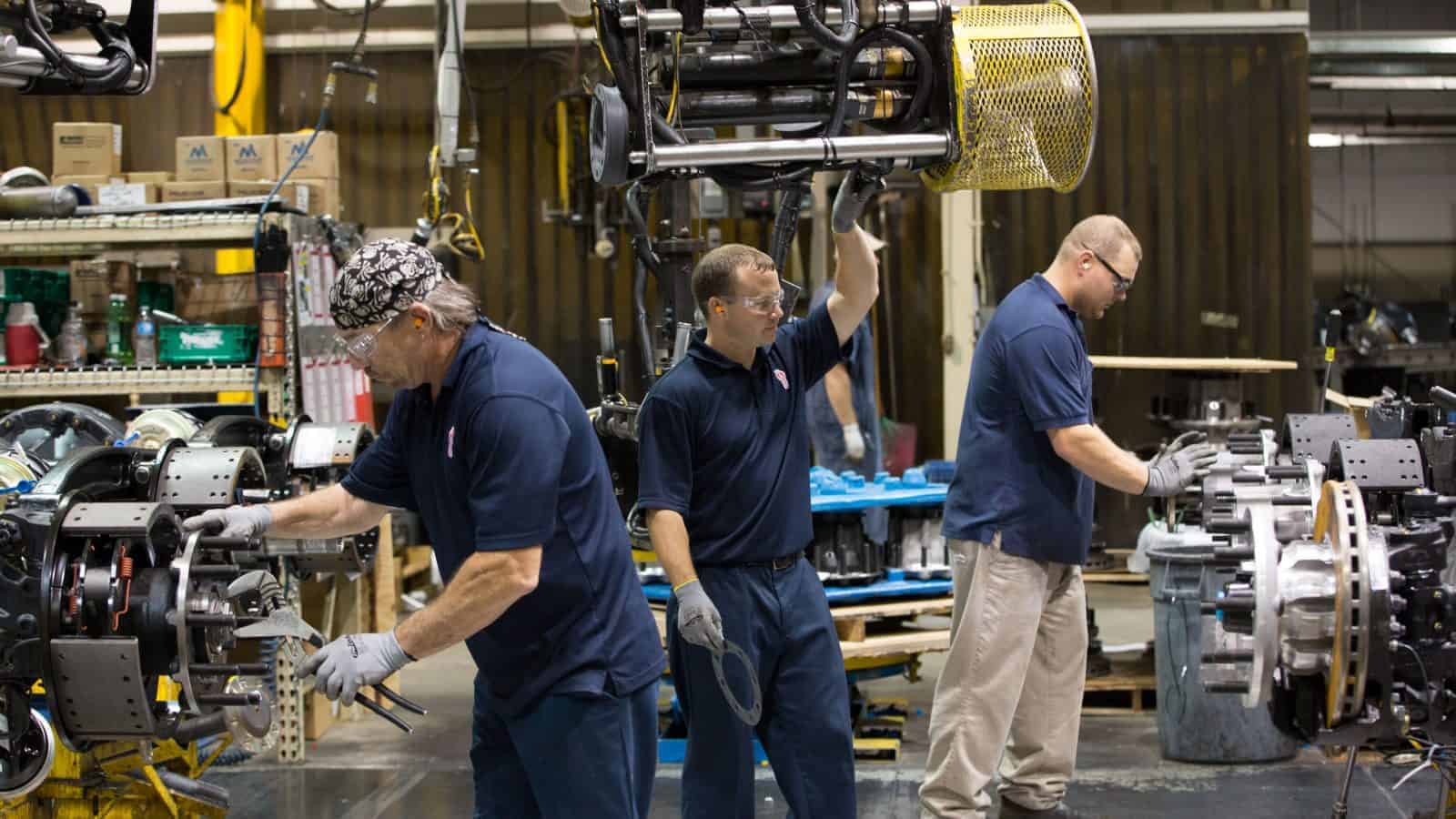How Manufacturers Can Benefit from Military Talent

Looking for committed, disciplined employees to add to your workforce? In honor of Veterans Day, we’ll be highlighting how recruiting military talent—whether transitioning service members, veterans, National Guard members, reservists or military spouses—can help manufacturers address structural workforce shortages.
A productive match: At the Manufacturing Institute’s annual Workforce Summit in October, Maj. Gen. Kris A. Belanger, commanding general of the 99th Readiness Division, Army Reserve, spoke about the results manufacturers and military talent can achieve by working together.
- “The military offers diverse talent, very diverse. There are lots of ways that our training, roles and responsibilities overlap with those in manufacturing. Hiring military talent is a win–win situation,” she emphasized.
Making connections: During the “Leveraging Military Talent to Source an Essential Workforce” breakout session, MI National Director of Military and Veterans Initiatives Amy Thomas discussed how manufacturers can widen talent pipelines to include those affiliated with the military.
- “The Heroes MAKE American initiative trains and support military talent as they find a new career that utilizes their military training and experiences,” she said.
- “Since 2018, Heroes MAKE America has issued more than 6,000 industry-recognized certifications, achieved a 90% placement rate among graduates in more than 350 companies in 48 states and has shared information about manufacturing careers with more than 12 million individuals from the greater military community through social media, [Department of Veterans Affairs] newsletters and virtual and in-person industry events,” she continued.
Dive deeper: In addition to the Workforce Summit sessions, the MI held a Solution Series workshop in July to help manufacturers connect with military talent. The workshop offered manufacturers practical, actionable advice.
- For example, manufacturers should make sure the requirements listed in position descriptions are truly required for successful fulfillment of that role’s responsibilities, so that candidates coming from nontraditional backgrounds (such as military service) know they are welcome to apply.
- Companies should also make sure they know what military ranks and designations mean in terms of skills. They can go to the Civilian Leadership Equivalency Handout for guidance.
- For more tips, check out the MI’s Top 10 Solutions to Connect with Military-Affiliated Talent.
The last word: In conversation with Maj. Gen. Belanger, MI President and Executive Director Carolyn Lee noted, “With nearly 200,000 service members transitioning out of the military each year, the MI realized this was an opportunity to tap into that talent pool, teach them about manufacturing and bring them into our industry. That’s what makes our HMA program so exciting. We’re building those connections and providing those solutions.”
Get involved: Interested in learning more? Join the HMA team on Nov. 20 from 3:30 p.m. to 4:30 p.m. EST to learn how manufacturers can get involved in the program and benefit from this talent pool.
